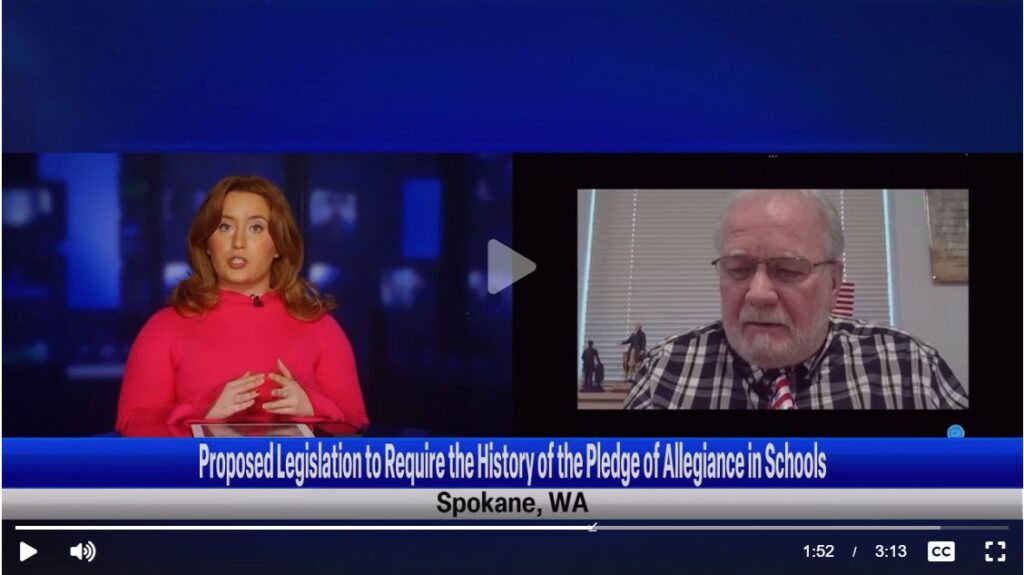Students would be required to learn the history and the reasoning behind the Pledge of Allegiance in Washington public schools if SB 6205 passes in the State Legislature.
If this became law, Washington school districts would be required to offer instruction in the meaning and history of the Pledge of Allegiance at least once in elementary, middle or high school.
The bill came about after a teacher at Eatonville Middle School realized that while his students had had the Pledge of Allegiance memorized, they did not know the intention or history behind the words they were reciting.
“We looked at the history of the Pledge…Then, we looked at the law. And that’s where it really got interesting because…these are bright kids. And they wondered, ‘well, okay, so we’re supposed to say this by law, but we don’t know what it means. So, why are they requiring us to say something that the schools aren’t bothering to teach us what it means?’. I said ‘Yeah, ditto!'”, Alex Hansen, a teacher at Eatonville Middle School said.
Hansen and his students wrote to their legislators and were connected with Sen. Jim McCune (R-Graham).
“The country used to teach the meaning and the history all across this country of the Pledge. And so, it actually gives the students a reason to stand there… and [know] why we’re actually standing there saying this Pledge,” McCune said.
Sen. Phil Fortunato (R-Auburn) is co-sponsoring the bill.
“If we’re going to teach our children all of this other stuff that the State of Washington mandates from the… great school board in the sky from Olympia… and taking away a parent’s right to affect change within their school district, at least let’s educate our children, and…what it means to be an American, and why the Pledge of Allegiance was put in place,” Fortunado said.
At this time, there has been no opposition to SB 6205.
If this bill were to become law, the mandate would begin no later than the 2025-2026 school year.
The next step for the bill is to head to the Senate Rules Committee.











